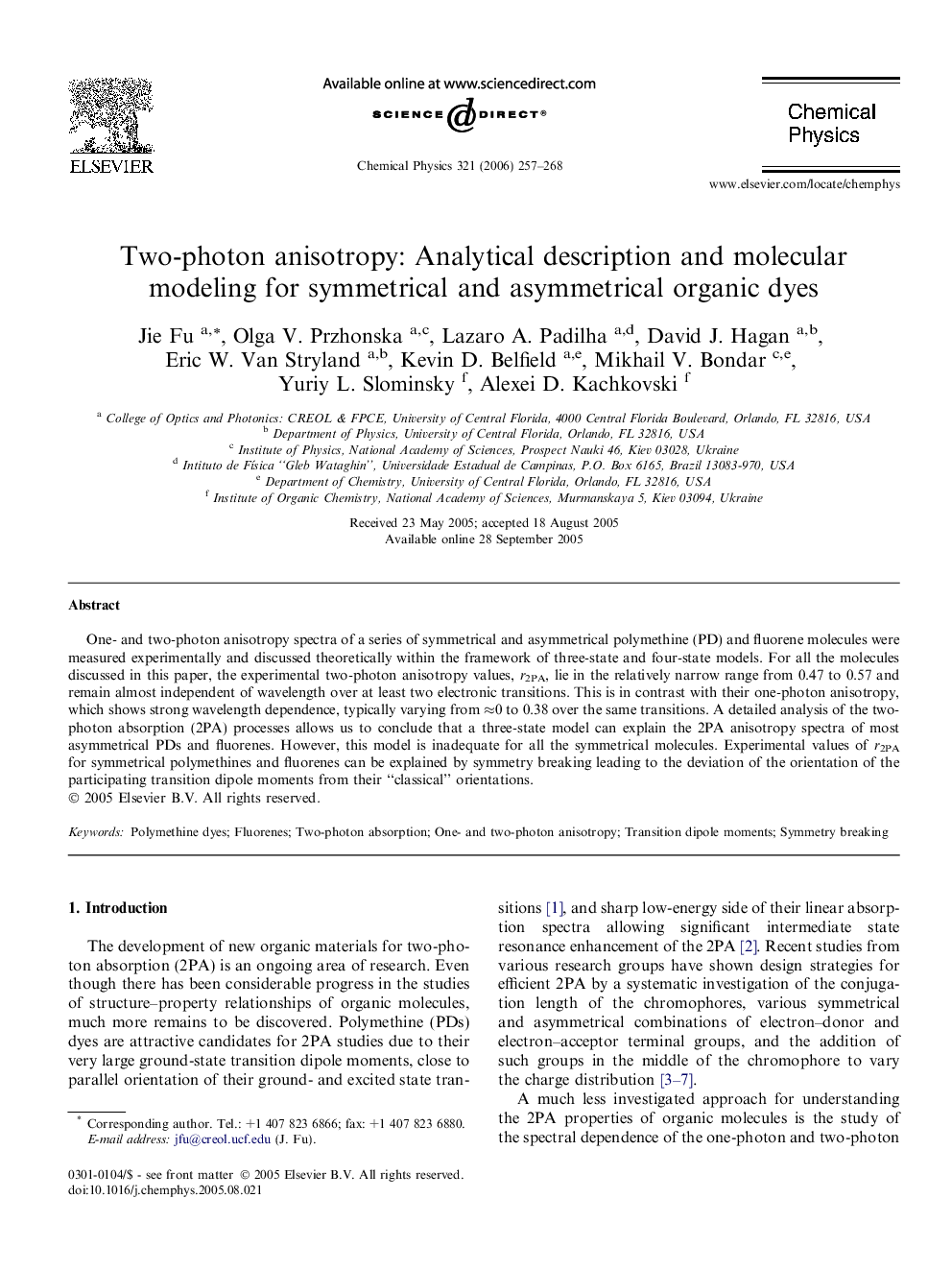| Article ID | Journal | Published Year | Pages | File Type |
|---|---|---|---|---|
| 5377305 | Chemical Physics | 2006 | 12 Pages |
Abstract
One- and two-photon anisotropy spectra of a series of symmetrical and asymmetrical polymethine (PD) and fluorene molecules were measured experimentally and discussed theoretically within the framework of three-state and four-state models. For all the molecules discussed in this paper, the experimental two-photon anisotropy values, r2PA, lie in the relatively narrow range from 0.47 to 0.57 and remain almost independent of wavelength over at least two electronic transitions. This is in contrast with their one-photon anisotropy, which shows strong wavelength dependence, typically varying from â0 to 0.38 over the same transitions. A detailed analysis of the two-photon absorption (2PA) processes allows us to conclude that a three-state model can explain the 2PA anisotropy spectra of most asymmetrical PDs and fluorenes. However, this model is inadequate for all the symmetrical molecules. Experimental values of r2PA for symmetrical polymethines and fluorenes can be explained by symmetry breaking leading to the deviation of the orientation of the participating transition dipole moments from their “classical” orientations.
Related Topics
Physical Sciences and Engineering
Chemistry
Physical and Theoretical Chemistry
Authors
Jie Fu, Olga V. Przhonska, Lazaro A. Padilha, David J. Hagan, Eric W. Van Stryland, Kevin D. Belfield, Mikhail V. Bondar, Yuriy L. Slominsky, Alexei D. Kachkovski,
